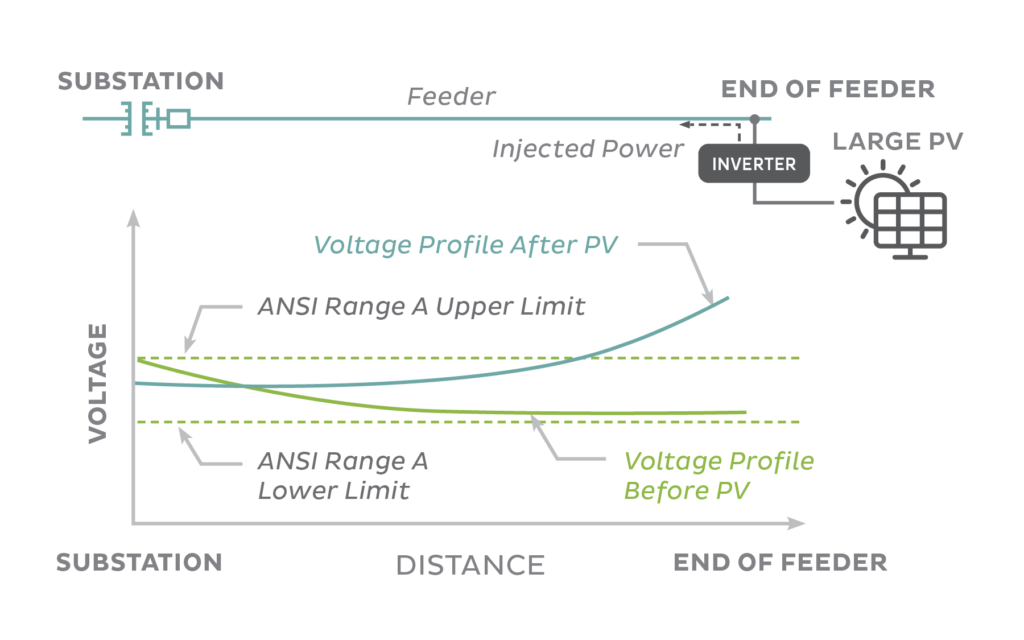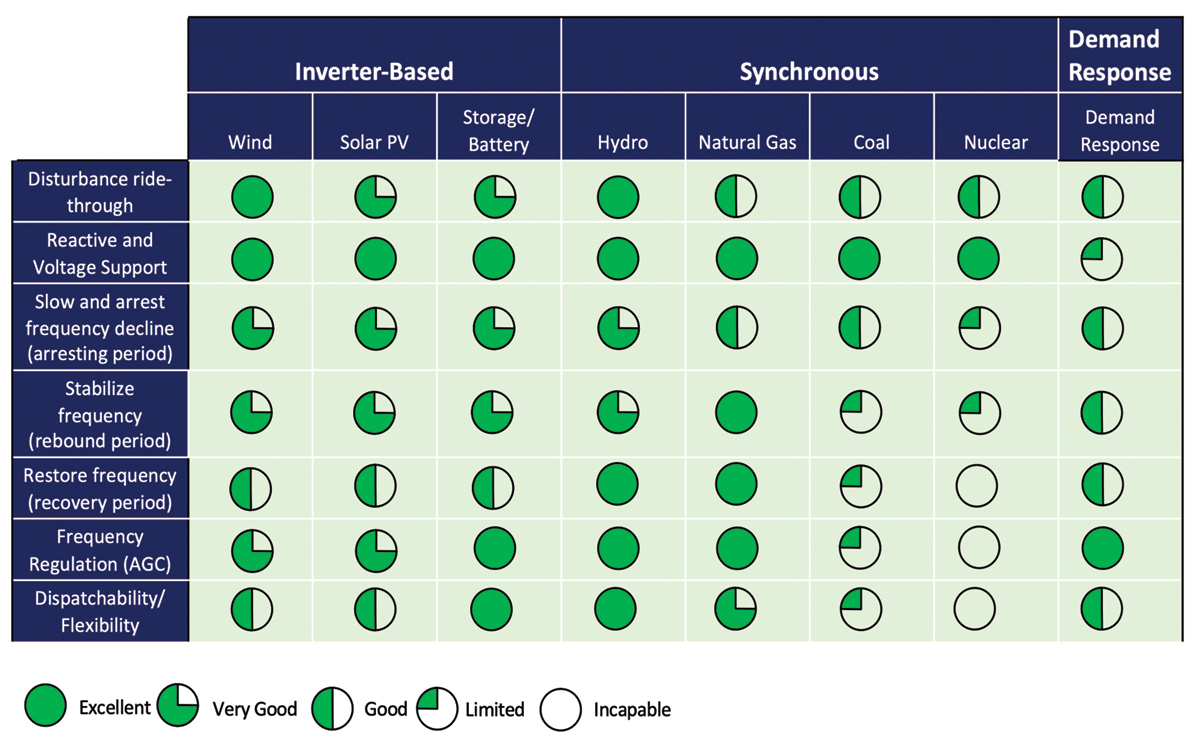By William Driscoll July 2, 2021

Inverters being tested in the Emergy Systems Laboratory ESL by Julieta Giraldez Miner, Ramanathan Thiagarajan and Rasel Mahmud working on an inverter test set up for HECO. © Dennis Schroeder / NREL
Smart inverters for distributed solar and storage are a win-win-win. They make room for more solar on distribution circuits. They enable distributed solar and storage to provide grid services. And they open the door for owners of rooftop solar to be compensated for those grid services.
Some states are gradually adopting a new global standard for smart inverters for distributed solar and storage. Advocacy groups favor the standard, while the National Association of Regulatory Utility Commissioners has recommended that states implement the standard, in unanimous votes by the board of directors and two committees.
Hawaii and California, where rooftop solar is popular, were the first states to require the use of smart inverters. The states didn’t wait for the international engineering body IEEE to finalize a new smart inverter standard, but instead set their own requirements, based on the capabilities of smart inverters available at the time.

© EPRI April 2021
Now that IEEE has finalized its new inverter standard, IEEE-1547-2018, Minnesota and Maryland will soon require new distributed solar and storage installations to use inverters that meet the standard. Hawaii is also adopting the new standard, and eight other states and the District of Columbia have opened dockets to consider the standard, as shown on the nearby map.
Endorsing Maryland’s new requirement were solar installer Sunrun and the Energy Storage Association.
The Interstate Renewable Energy Council backs smart inverters as well, and has prepared a primer for state policymakers considering adopting the new standard. The National Renewable Energy Laboratory has compiled a list of 29 educational resources on the standard.
Be prepared
Other states should join those that have adopted the standard or are formally considering it, says grid consultant Harry Warren with the Center for Renewables Integration. A state-level requirement to use inverters compliant with IEEE-1547-2018 for new distributed solar and storage is especially important, he says, for states that already have high levels of solar and storage on distribution circuits, or that plan for high levels of distributed resources.
As the amount of solar and storage on distribution circuits grows, having a substantial installed base of these smart inverters on a circuit can increase the circuit’s hosting capacity, making room for more solar on the circuit without the need for costly voltage regulation equipment. That’s because each inverter that’s compliant with IEEE-1547-2018 can regulate voltage.

Fig. 1 © GridLab
Voltage for non-engineers
The voltage issue is illustrated in the nearby image from the consultancy GridLab. At the top right, the illustration shows “large PV” added at the end of a distribution circuit, or feeder. The graph in the image shows that the voltage profile, as it approaches the end of the feeder at right, exceeds the recommended upper limit for voltage. That problem needs to be avoided.
GridLab says the solution is to use smart inverters and harmonize smart inverter settings, so the smart inverters can help regulate voltage on the circuit and increase the circuit’s hosting capacity.
GridLab recommends that each state select two specific smart inverter capabilities: first, Volt-VAR, which requires no communication signals from the utility, and second, Volt-Watt, which GridLab calls a backstop for voltage events. California requires both of these settings— Volt-VAR and Volt-Watt—while Hawaiian Electric requires Volt-VAR.
The Center for Renewables Integration phrases its advice differently, saying that the voltage control capabilities of IEEE-1547-2018 inverters should be used, as well as the inverters’ “ride-through capabilities.”
Smart inverters can also provide grid services, for which owners of solar and storage deserve compensation.
Grid consultant Michael Milligan has noted that inverters form the basis of the grid capabilities of solar and storage: the very fast response of inverters enables rooftop solar, for example, to interact with the power system.
 Fig. 2: The seven types of grid services that various types of generation can provide. © Milligan
Fig. 2: The seven types of grid services that various types of generation can provide. © Milligan
The nearby table, developed by Milligan, shows the seven types of grid services that various types of generation can provide. The second and third columns of circles show that both solar PV and battery storage can provide good, very good or excellent grid services in all seven areas.
One existing means of accessing distributed solar’s grid services capabilities involves a utility or an aggregator issuing communications calling on grid services. This approach requires distributed solar with hardware that can respond to the utility’s or aggregator’s communications.
GridLab is developing a case for an autonomous grid to allow distributed resources to respond to passive signals: price, voltage and frequency. GridLab’s executive director Ric O’Connell has said “we believe these three are all you need for most distributed energy resources.”
The IEEE-1547-2018 standard comes with grid-supportive features that allow distributed solar and storage to autonomously respond to grid signals.
Pennsylvania’s side-by-side comparison
A contest is playing out in Pennsylvania over whether distributed solar and storage must be centrally controlled—for example, to manage voltage—or may provide such grid services autonomously. Also at issue is whether owners of distributed solar and storage will be compensated for the grid services they provide, and at what price.
The contest began in 2019 when the solar installer Sunrun challenged a plan by the utility PPL to “monitor and manage” all new distributed energy resources in its service territory. Sunrun said in a state regulatory filing that PPL aimed “to require customers to relinquish control” of new distributed solar and storage resources, and to allow the utility to manage these resources without compensation.
The environmental group NRDC, joined by solar industry representatives, also objected to PPL’s plan, saying in a filing that “nothing in the plan seems to contemplate that distributed resource owners and operators would be compensated.”
Last December the Pennsylvania Public Utility Commission approved a settlement—to which Sunrun was not a party—that sets up a three-year pilot test of two approaches. One approach will be that proposed by PPL, which requires the use of inverters that enable the utility to manage distributed resources—in what is often called a distributed energy resource management (DERM) system.
The other approach will allow new distributed resources with smart inverters to respond autonomously to voltage signals. The smart inverters used in this approach will have the Volt-VAR setting selected, and may use Volt-Watt if the interconnecting customer agrees, said Harry Warren. Ride-through settings, he added, will be in accordance with recommendations from the PJM grid operator.
About the Author
William Driscoll, a freelance reporter for PV Magazine USA, has presented an ASES webinar on policies that could advance smart inverters, as well as several other technologies, to accelerate the adoption of distributed solar and storage.




